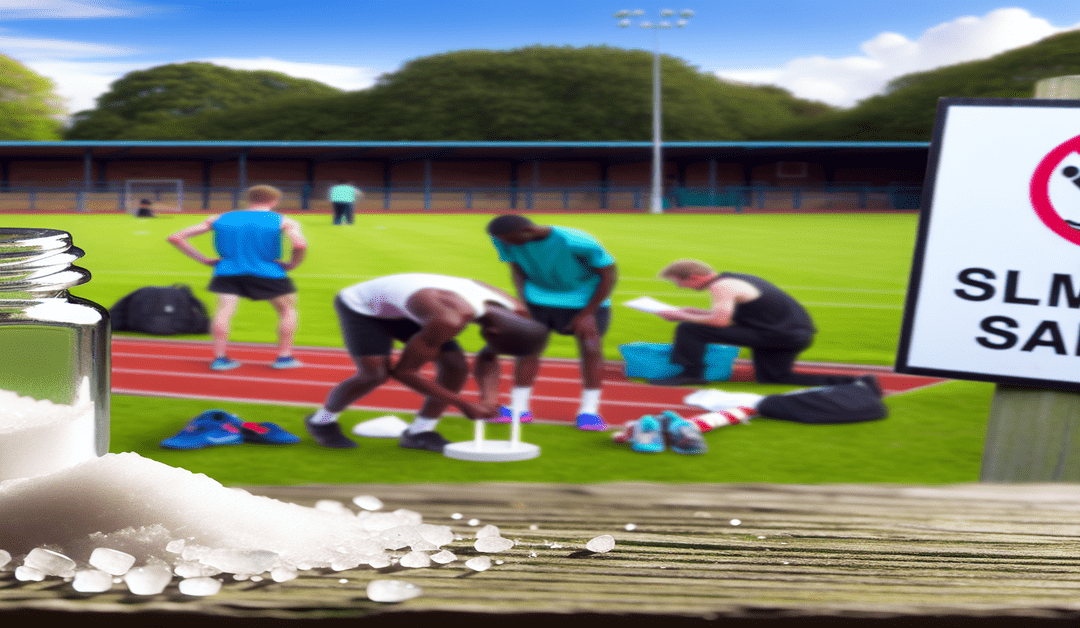The Dangers of Smelling Salts: Why Athletes Should Think Twice
In the world of sports, athletes are always looking for an edge to enhance their performance. From rigorous training regimens to specialized diets, competitors will go to great lengths to gain a competitive advantage. However, one controversial practice that has been gaining attention lately is the use of smelling salts. Santa Fe ISD has recently issued a warning to their athletes about the potential dangers associated with this seemingly harmless practice.
What Are Smelling Salts?
Smelling salts, also known as ammonia inhalants, are a mixture of ammonia and perfume or essential oils. When inhaled, the ammonia irritates the nasal and lung membranes, causing a sudden increase in breathing and oxygen flow to the brain[1][2]. Traditionally, smelling salts have been used to revive individuals who have fainted or lost consciousness. However, in recent years, they have become increasingly popular among athletes seeking a quick boost in alertness and performance[4].
The Risks and Side Effects
While the temporary stimulant effect of smelling salts may seem appealing to athletes, the risks associated with their use cannot be ignored. The most common side effects include irritation to the nasal passages, mouth, and throat, as well as headaches, coughing, and breathing difficulties[2][4]. In some cases, individuals may even experience allergic reactions to the ammonia or other ingredients in the inhalants.
Moreover, the **repeated use of smelling salts can lead to more serious health consequences**. Overexposure to ammonia can cause damage to the nasal passages and lungs, potentially leading to chronic respiratory issues[2][4]. Athletes with pre-existing respiratory conditions, such as asthma, are particularly vulnerable to these risks and should avoid using smelling salts altogether[2][4].
Questionable Performance Benefits
Despite the popularity of smelling salts among athletes, there is limited scientific evidence to support their effectiveness in enhancing athletic performance. Some studies suggest that the use of smelling salts may have no significant impact on physical performance measures[4]. While there may be a psychological effect, such as increased alertness or perceived readiness, these benefits are likely short-lived and do not translate to improved athletic outcomes[4].
Masking Injury Symptoms
One of the most concerning aspects of smelling salt use among athletes is the potential for masking symptoms of serious injuries, particularly concussions. The temporary stimulant effect of ammonia inhalants can cause an athlete to feel more alert and less disoriented, even if they have sustained a head injury[2][3]. This can lead to a **delayed diagnosis and treatment of concussions**, putting the athlete at risk of further injury if they continue to play[3].
The Bottom Line
Given the potential risks and lack of proven performance benefits, it is clear why Santa Fe ISD has taken a proactive approach in warning their athletes about the dangers of smelling salts. The use of these inhalants without proper medical guidance is strongly discouraged, especially in situations where an athlete may have an underlying injury[3][4].
As responsible coaches, trainers, and parents, it is our duty to prioritize the health and well-being of our athletes above all else. By educating ourselves and our athletes about the potential dangers of smelling salts, we can foster a safer and more supportive environment for athletic competition.
Share this article with your fellow coaches, trainers, and athletes to raise awareness about the risks associated with smelling salts. Together, we can encourage a culture of responsible and informed decision-making in the world of sports.
#AthleteHealth #SafeSports #SmellingSaltsRisks
-> Original article and inspiration provided by ReviewAgent.ai
-> Connect with one of our AI Strategists today at ReviewAgent.ai

